#plotless worldbuilding
Explore tagged Tumblr posts
Text
"There are books I'd take to the beach and then leave them at the hotel."
- my book obsessed friend during book club
#the book was that bad#bookclub#books#I read it but I regret it#plotless#cool worldbuilding tho#2/10 stars
1 note
·
View note
Text
Book recs: Queer science fiction, part 1
There is a lot of queer sf out there, and I read a lot of sf. When I started working on this list, I quickly realized it was impossible to include all that I've read and enjoyed in one single rec post. Thus, this is the first of so far three queer sci-fi book rec posts.
A note: queer here does not necessarily mean "guarantee of an f/f or m/m ship with a happy ending", but rather simply a significant presence of queerness. Some of the books feature no romance but has a same gender attracted/trans/a-spectrum lead, or features an m/f relationship with bisexual, trans or aro/ace characters, or simply features a world-building which is heavily queer inclusive in ways that don't always compare to our own ideas of sexuality and gender. I have however disqualified works where the only queer presence is along the lines of "gay best friend" or a blink and you'll miss it confirmation that never comes up again.

Previous book rec posts:
Really cool fantasy worldbuilding, really cool sci-fi worldbuilding, dark sapphic romances, mermaid books, vampire books, many worlds: portal fantasies, many worlds: alternate timelines, robots and artificial intelligences, post- and transhumanism, alien intelligences
For more details on the books, continue under the readmore. Titles marked with * are my personal favorites. And as always, feel free to share your own recs in the notes!



The Light Brigade by Kameron Hurley*
Dietz is a soldier in the war between Earth and Mars - to travel to the battle front, she and her fellow soldiers are broken down into light to be able to quickly travel across space. But something keeps going wrong with Dietz's travels; her memories don't match up with the mission briefs, as she experiences time itself turning in on itself. Is she going mad? Or are the things she's learning skipping through time the truth - and the war that's stealing her life the lie? A mindfuck of a book that's scathing in its critique of fascism and war. Features a sapphic lead but no romance.
A Psalm for the Wild-Built (Monk and Robot duology) by Becky Chambers
Novella. Long ago, robots, upon gaining sentience, simply laid down their work and walked into the wilderness. Long after, a tea monk looking for purpose follows after them into the wilds, where they come across one of the robots seeking its own sort of answers. While not plotless, this story focuses more on character and vibes over plot. Also has a nonbinary main character and features conversations on gender between human and robot.
Meet Me In Another Life by Catriona Silvey*
Thora and Santi are strangers, brought together by a coincidence and torn apart just as abruptly when tragedy strikes. But this is neither the first nor the last time they meet - again and again they encounter each other, as friends, lovers, enemies, family, every time recognizing in each other a familiarity no one else carries. But with every new life, a mysterious danger grows ever closer, forcing them to find out the truth of their connection. This is a puzzle-box of a story that goes some entirely unexpected places in a very wild ride, featuring a bisexual co-lead.
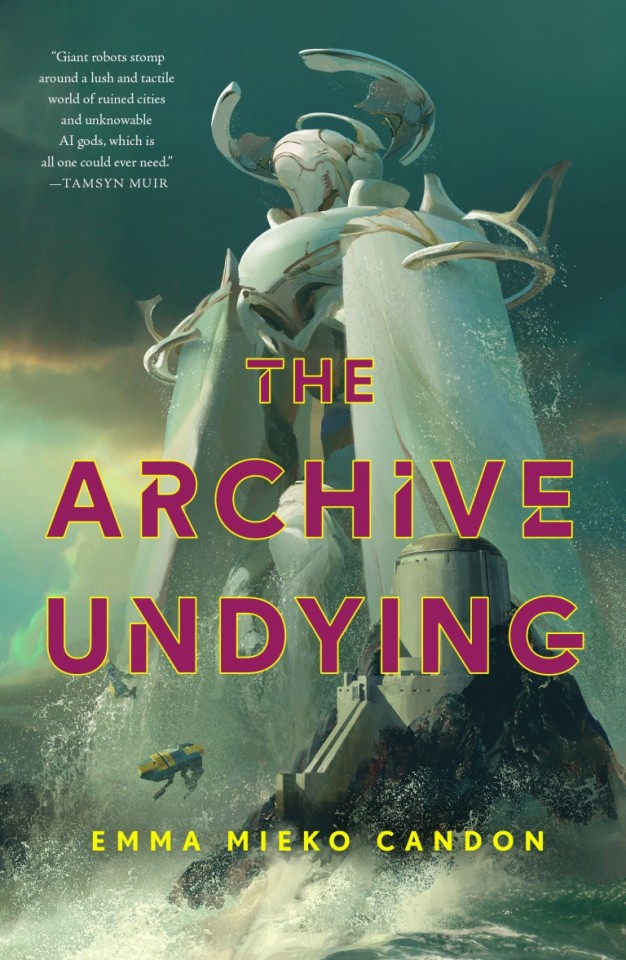
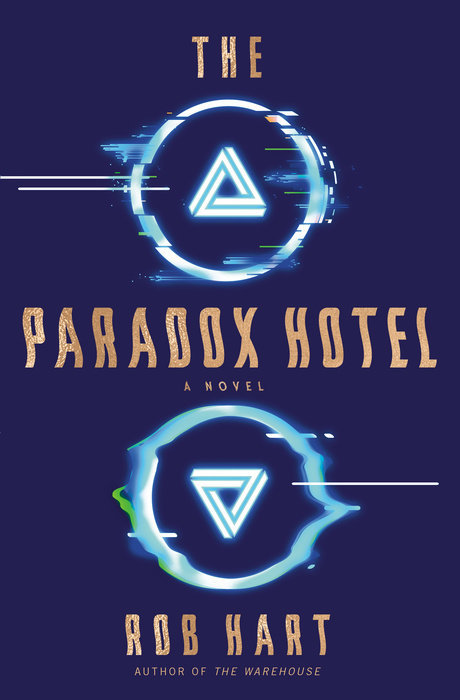
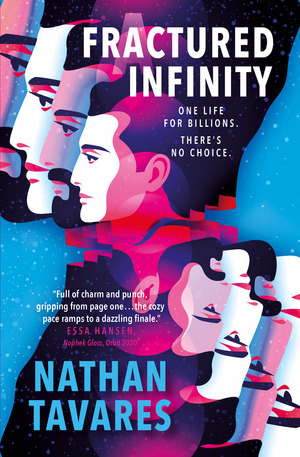
The Archive Undying (The Downworld Sequence) by Emma Mieko Candon
In a world where AI gods sometimes lose their minds and take entire populations down with them, Sunai was the only survivor when his god went down. In the 17 years since, he has wandered on his own, unable to either die or age, drowning his sorrows in drink and men. But his attempts to flee his past comes to a stop as he is forced back into the struggle between man and machine. Featuring some pretty wild world building and narrative techniques, this book will definitely confuse you, but it is worth the experience.
The Paradox Hotel by Rob Hart
January Cole works security at the Paradox Hotel, last stop for tourists heading for the timeport, which allows them to travel to and witness any moment in time. But years of proximity to the timeport has left its damage on January, making her unstuck in time, letting her relive memories of her dead lover even as her sanity slips away bit by bit. As she starts witnessing proof of a horrible crime in the hotel that no one else can see, January must race against her own mind, a killer, and time itself to solve it before it's too late.
A Fractured Infinity by Nathan Tavares
Hayes Figueiredo is a struggling film-maker who wants to finish his documentary, whose life gets turned upside down when handsome physicist Yusuf Hassan enters his life, claiming an alternate version of him is a great inventor who’s sent a mysterious device to their universe. As Hayes gets drawn deeper into the conspiracy - and his feelings for Yusuf intensify - he has to decide just how far he’s prepared to go to win the life and the love he wants. Featuring a very gay and very morally dubious lead, this is a creative and strange read.


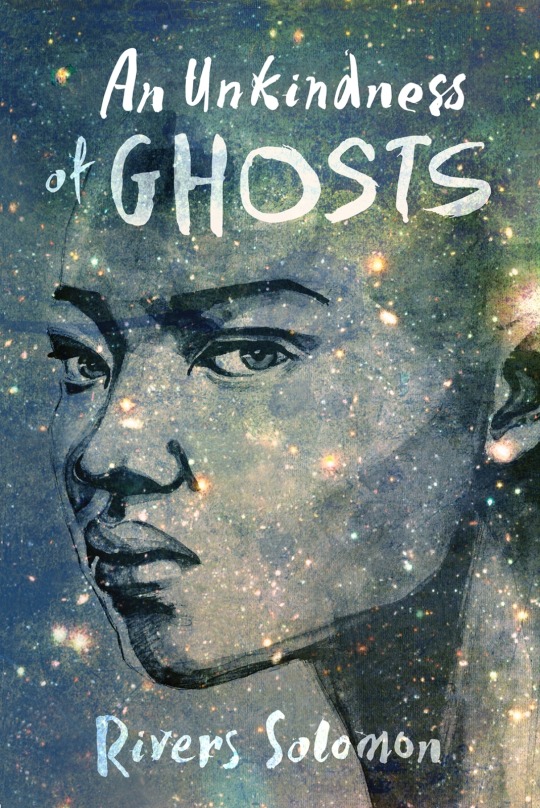
Bridge by Lauren Beukes
When she was little, Bridge and her mother Jo used to play a game - one where they traveled to other worlds, inhabiting the bodies of their other selves. Now Jo is dead, and as Bridge is cleaning out her apartment she finds a strange device: a dreamworm, the very thing that supposedly makes inter-dimensional travel possible. Suddenly faced with the possibility that multiverse travel is real, Bridge is struck by a different question: could her mother still be alive? Scifi spiced with a healthy dose of body horror and some absolutely wild twists, Bridge also features a bisexual lead (however this is a blink and you’ll miss it moment) and a nonbinary co-narrator.
The Long Way to a Small, Angry Planet (Wayfarers series) by Becky Chambers
Rosemary Harper just got a job on the motley crew of the Wayfarer, a spaceship that works with tunneling new wormholes through space. With a past she wants to leave behind, Rosemary is happy to travel the far reaches of the universe with the chaotic crew, but when they land the job of a life time, things suddenly get a lot more dangerous. A bit of a tumblr classic in its day, this is a cozy space opera with an episodic feel and vividly realized characters and cultures. While pretty light on romance and focusing found family, there is a main f/f relationship.
An Unkindness of Ghosts by Rivers Solomon
Life on the lower decks of the generation ship HSS Matilda is hard for Aster, an outcast even among outcasts, trying to survive in a system not dissimilar to the old antebellum South. The ship's leaders have imposed harsh restrictions on their darker skinned people, using them as an oppressed work force as they travel toward their supposed Promised Land. But as Aster finds a link between the death of the ship's sovereign and the suicide of her own mother, she realizes there may be a way off the ship.
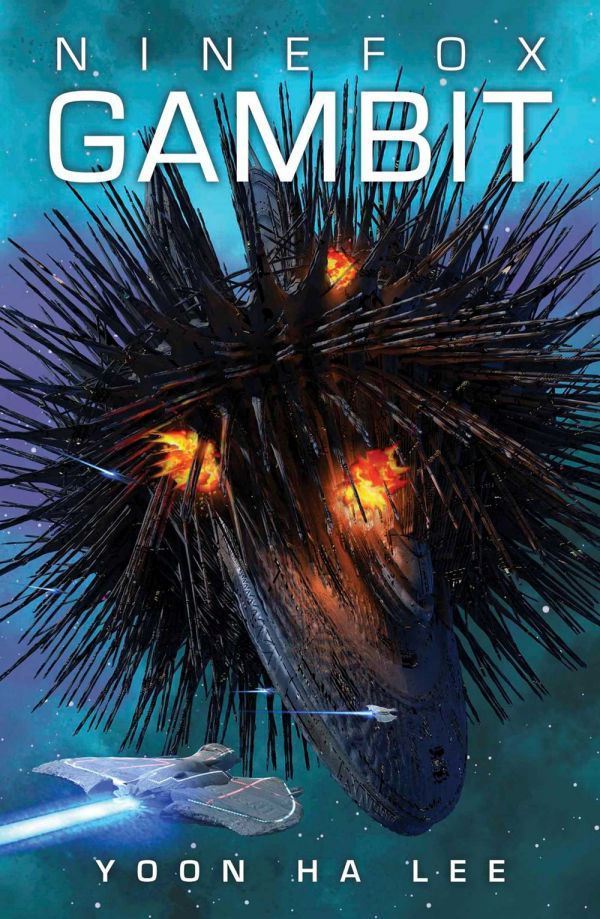

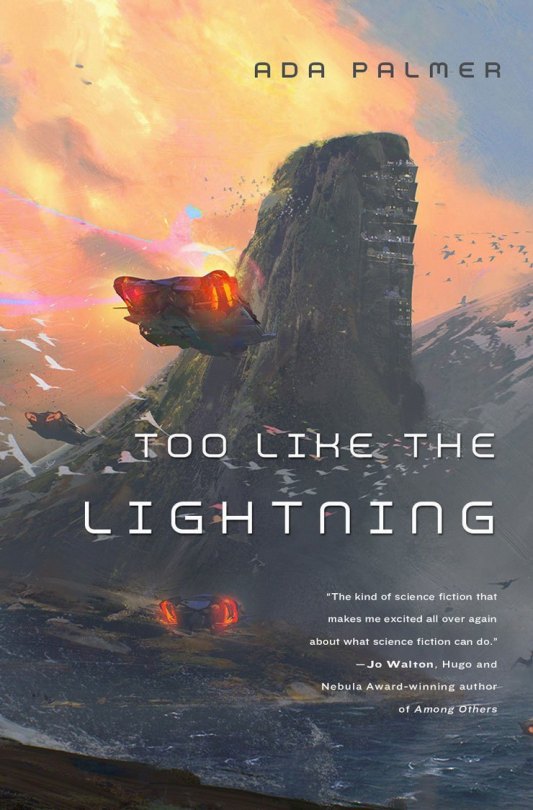
Ninefox Gambit (The Machineries of Empire trilogy) by Yoon Ha Lee*
Military space opera where belief and culture shape the laws of reality, causing all kinds of atrocities as empires do everything in their power to force as many people as possible to conform to their way of life to strengthen their technology and weapons. It’s also very queer, with gay, lesbian and trans major characters, albeit little to no romance.
The Left Hand of Darkness (Hainish Cycle) by Ursula K. Le Guin
1969 classic. Genly Ai is an emissary sent to the planet of Winter, meant to help facilitate Winter's inclusion in a growing intergalactic civilization. But he's unprepared for Winter's citizens, who spend much of their time genderless or switching between genders, making for a culture wildly different from that Genly is used to.
Too Like the Lightning (Terra Ignota series) by Ada Palmer*
Centuries in the future, humanity has deliberatly engineered society to be as utopian as possible, politically, socially, sexually, religiously. Written in an enlightenment style and featuring questions of human nature and whether it’s possible to change it, and what price we’re prepared to pay for peace, this book is simultaneously very heavy and very funny, and written in a very unique style. While still human, the society presented often feels starkly alien.
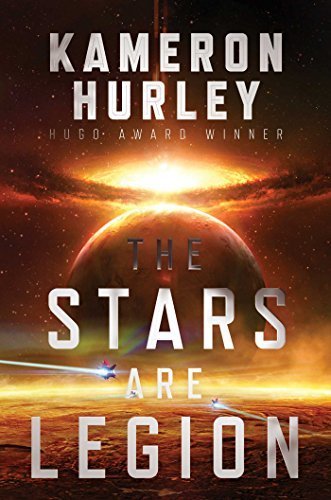
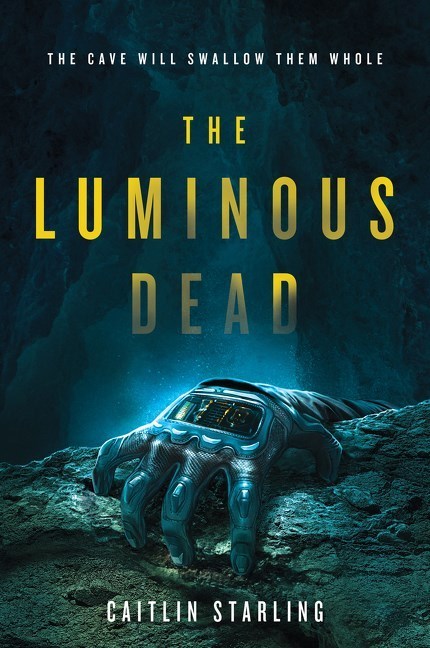
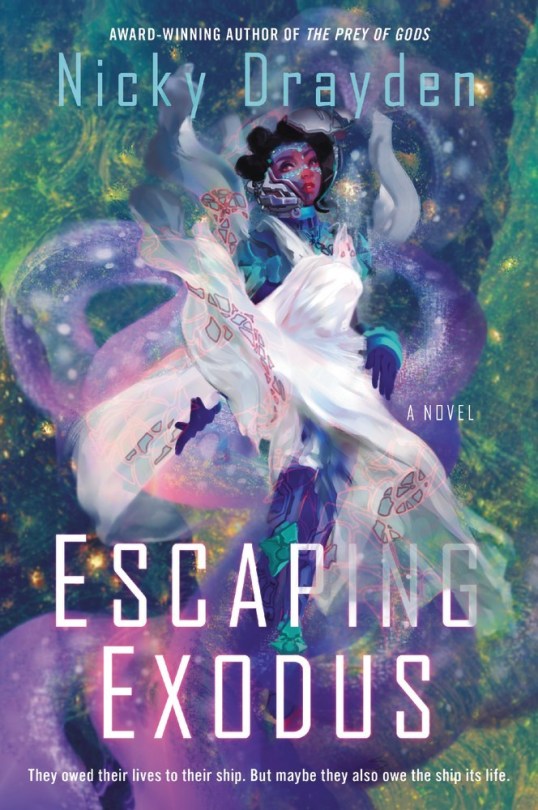
The Stars Are Legion by Kameron Hurley
This book fucked me up when I read it. It’s weird, it’s gross, there’s So Much Viscera, there are literally no men, it has living spaceships and biotech but in the most horrific way imaginable. Had I to categorize it I would call it grimdark military sf. It’s an experience but not necessarily a pleasant one.
The Luminous Dead by Caitlin Starling*
Possibly one of the most unsettling books I’ve ever read, and definitely the most claustrophobic. Gyre, a caver on an alien planet, ventures into the dark and dangerous underground, guided only by a woman who has no compunctions on using and manipulating Gyre as she sees fit to obtain her secretive goals down in the caves.
Escaping Exodus (Escaping Exodus series) by Nicky Drayden
While my feelings on Escaping Exodus were mixed, it cannot be denied that the dynamic between the two leads and the way they go from childhood best friends to enemies on different sides of a class and power struggle is very delicious. It also features some really cool worldbuilding of living, alien generation spaceships and the human culture that has developed inside them.
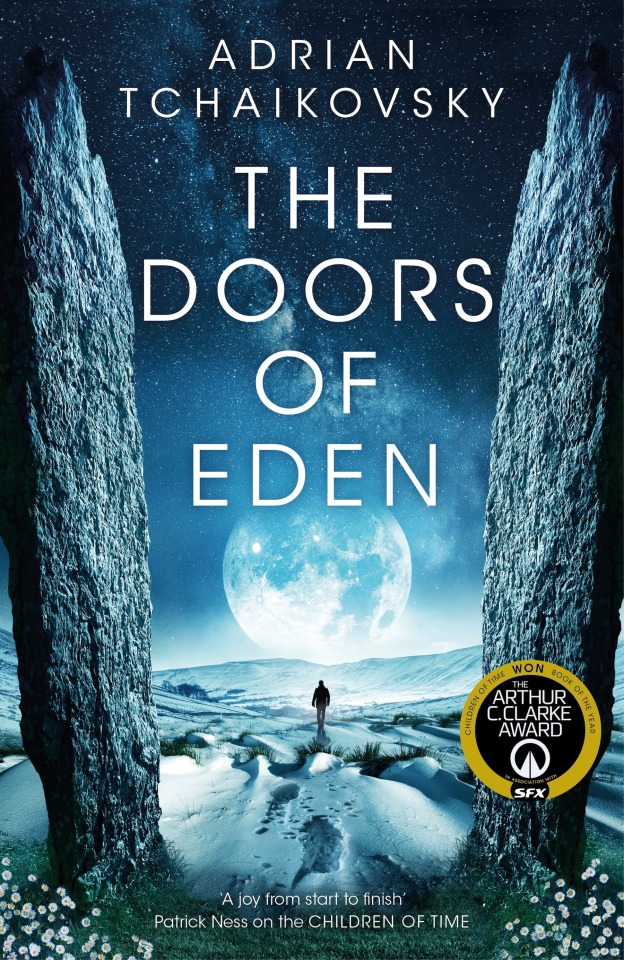
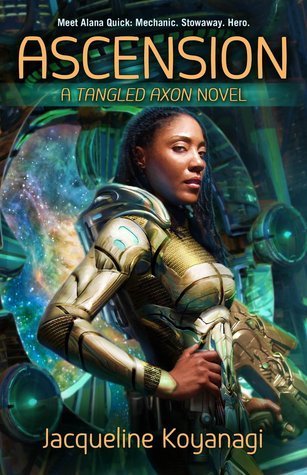
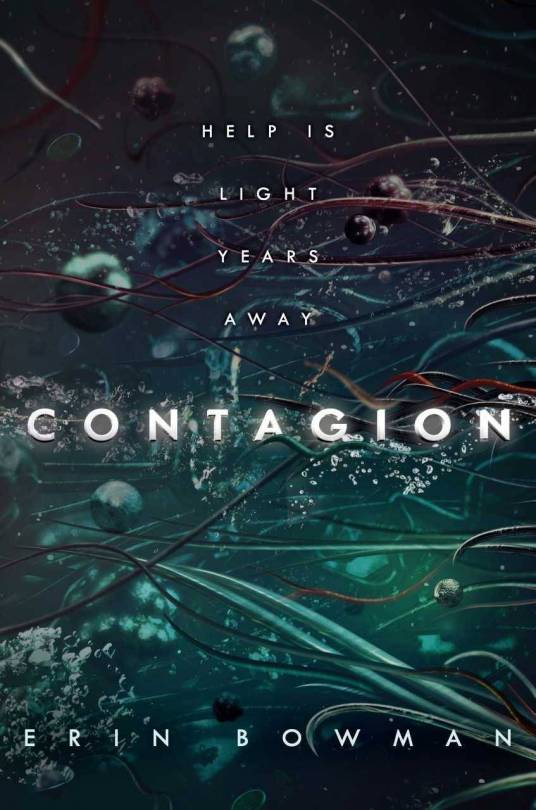
The Doors of Eden by Adrian Tchaikovsky*
The Doors of Eden is something of an experiment in speculative biology, featuring versions of Earth in which various different species were the one to rise to sentience, from dinosaurs to neanderthals. Now, something is threatening the existence of all timelines, dragging multiple different people and species into the struggle, among those a pair of cryptid hunting girlfriends and a transgender scientist.
Ascension by Jacqueline Koyanagi
Ascension follows Alana Quick, an expert Sky Surgeon who stows away on a spaceship in hopes of landing herself a job. But the ship and its crew are in deeper waters than she expected, facing threats emerging from a whole other universe, all of them searching for the same person: Alana’s spiritually enlightened sister. Undeniably a bit of an odd read, Ascension is also very creative and features polyamorous lesbian relationship.
Contagion (Contagion duology) by Erin Bowman*
Young adult. After receiving an SOS, a small crew is sent on a standard search-and-rescue mission. But what they find are not survivors awaiting help, but an abandoned site, full of dead bodies and crawling with something... monstrous. No romance, but features one sapphic co-lead and one who can easily be read as demisexual (however this doesn't show up until book two, which has more romance).

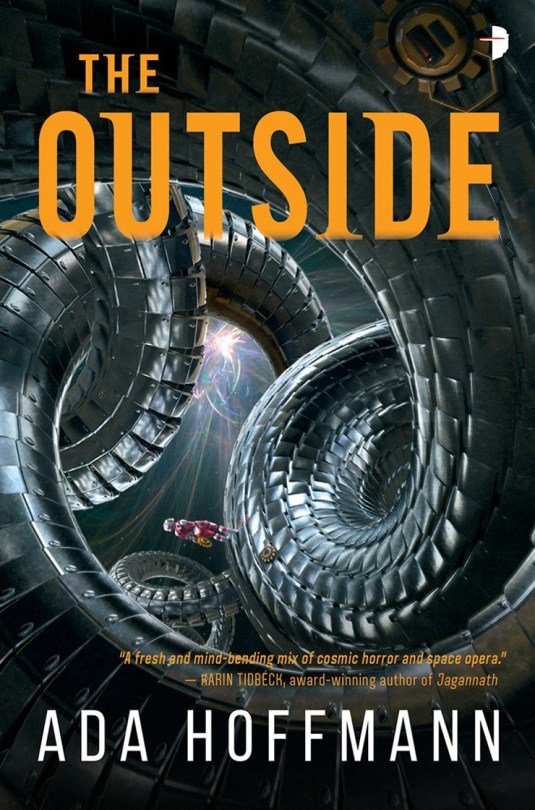
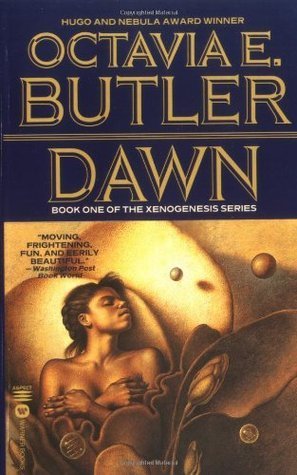
A Memory Called Empire (Texicalaan duology) by Arkady Martine
Mahit Dzmare is an ambassador sent to the center of the multi-system Teixcalaanli Empire, where she discovers that her predecessor has died. Trying to protect her home, an independent mining station, from being taken over by the empire, Mahit struggles to find out the truth of her predecessor's death while carrying the voice of his ghost in her head, guiding her as best he can. Light on the romance but does feature a sapphic relationship.
The Outside (The Outside trilogy) by Ada Hoffman*
AKA the book the put me in an existenial crisis. Souls are real, and they are used to feed AI gods in this lovecraftian inspired scifi where reality is warped and artifical gods stand against real, unfathomable ones. Autistic scientist Yasira is accused of heresy and, to save her eternal soul, is recruited by post-human cybernetic ‘angels’ to help hunt down her own former mentor, who is threatening to tear reality itself apart. Sapphic main character.
Dawn (Xenogenesis trilogy) by Octavia E. Butler*
After a devestating war leaves humanity on the brink of extinction, survivor Lilith finds herself waking up naked and alone in a strange room. She’s been rescued by the Oankali, who have arrived just in time to save the human race. But there’s a price to survival, and it might be humanity itself. Absolutely fucked up I love it I once had to drop the book mid read to stare at the ceiling and exclaim in horror at what was going on. Queer in the sense that the Oankali doesn't follow human ideas of gender and relationships, which is mirrored in their romantic relationships with humans. It is, however, pretty dark, with examinations of agency and consent, so enter with caution.
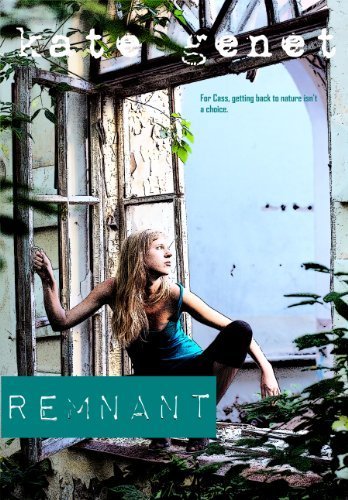

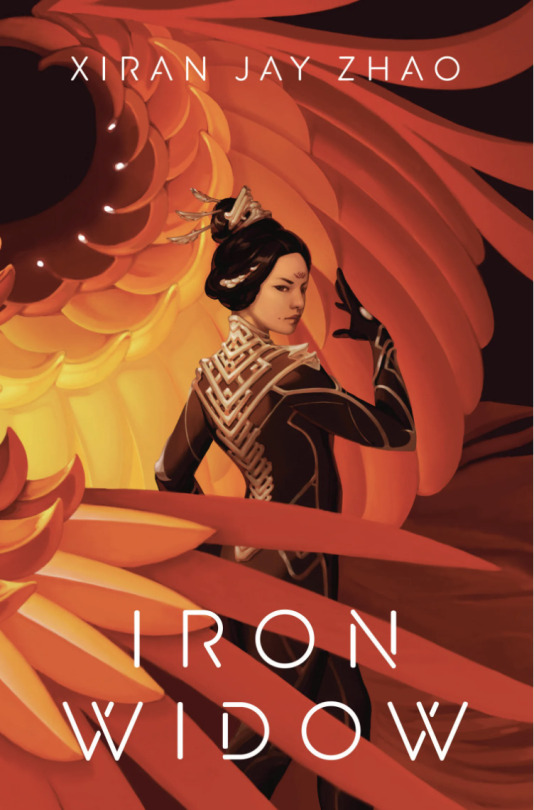
Remnant by Kate Genet
One day, Cass wakes up and finds everyone else is gone. Not dead, just gone, leaving her in a world which nature starts taking back with a dangerous, unnatural speed. But as she tries to survive this new normal, Cass realizes she may not be alone after all - but who else is out there, and are they a threat?
The Scorpion Rules (Prisoners of Peace duology) by Erin Bow*
Young Adult. Featuring a dystopian future in which an AI forcibly keeps world peace by holding the children of world leaders hostage. If anyone attempts to start a war, their child will be executed. Greta is one of these children, kept in a school with others like her. But things start to change one day when a new, less obedient hostage arrives. A unique, slowburn take on the YA dystopian craze, also featuring a bisexual love triangle.
Iron Widow (Iron Widow series) by Xiran Jay Zhao
Young adult. Zetian is a citizen of Huaxia, where mecha aliens are constantly trying to breach the Great Wall. To keep them at bay, couples of men and women pilot so called Chrysalises, giant transforming robots. But the pilots are not equal - the women almost always die, sucked dry by their co-pilots. When Zetian sets herself up to become a concubine-pilot, she does so with the plan to assassinate the male pilot who caused her sister's death. Features a polyamorous main relationship.
Bonus AKA I haven't read these yet but they seem really cool:
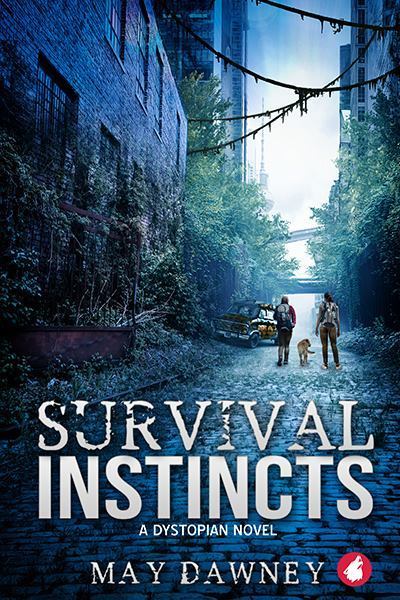
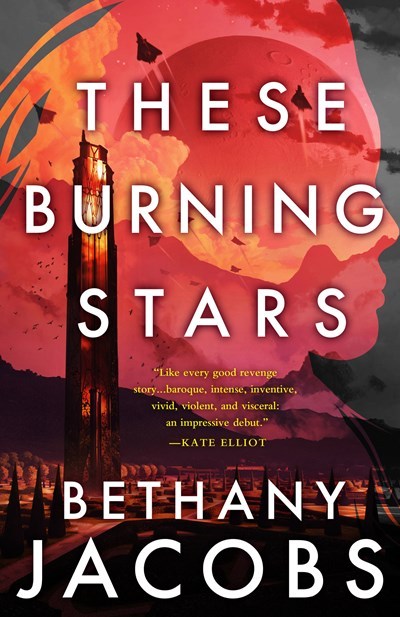

Survival Instincts by May Dawney
Lynn Tanner has been surviving the post-apocalypse alone with only her dog for a long time, trusting no one. But when she's forced to travel the dangerous remains of New York City alongside another woman, her priorities are challenged. Is staying alone really the best way to stay alive?
These Burning Stars by Bethany Jacobs
When con-artist Jun Ironway gets her hands on possible proof of the powerful Nightfoot family, controllers of interplanetary travel, committing genocide, she has in her hands a chance of taking them and their monopoly down. But the family and their allies won't go down easily, and sends two brutal clerics to stop her.
Everfair by Nisi Shawl
A neo-victorian alternate history, in which a part of Congo was kept safe from colonisation, becoming Everfair, a safe haven for both the people of Congo and former slaves returning from America. Here they must struggle to keep this home safe for them all.
#nella talks books#the light brigade#a psalm for the wild built#meet me in another life#the archive undying#the paradox hotel#fracture infinity#bridge#the long way to a small angry planet#an unkindness of ghosts#ninefox gambit#the left hand of darkness#terra ignota#the stars are legion#the luminous dead#escaping exodus#the doors of eden#the outside#xenogenesis#remnant#the scorpion rules#iron widow#survival instincts#these burning stars#everfair
1K notes
·
View notes
Note
anyways back to what I came here for which is asking what's the quick run-down of the did Steph au? Premise, plot, worldbuilding, whatever you would tell someone with a functional grasp on Steph lore but who's completely new to the concept.
ok the AU itself is mostly plotless imo but its basically an exploration of Steph’s entire life if she had DID throughout all of it. i want firstly to explore the idea that they’d have different parts/alters to handle relationships (of any kind, like we do!), & how that would impact their relationships + how that would impact the people theyre with when they find out !! but thwres other stuff i want to explore too like , if i get corey’s permission , how Cass’s system would feel abt it / how their relationship wpuld work . another thing im excited about is exploring DID Steph in the context of Babs & the Birds of Prey bc i looove putting my girl in situations
10 notes
·
View notes
Text
trying my level best not to succumb to the intense desire to worldbuild for my bunny Lance fic. it's literally just a plotless fic that leads up to smut, stop tormenting me! i'm not worldbuilding! i refuse! it's just a PWP! it doesn't need to make sense!
#tormented by fic once again#my brain is always trying to solve puzzles#some puzzles don't need to be solved man!#iakoawsad
15 notes
·
View notes
Text
it's midnight i fucked myself over in that very specific way where i get too into the plot of my otherwise just straight up nasty nasty plotless hoffstrahm scenarios and keep myself awake just. worldbuilding
8 notes
·
View notes
Note
!!! ok give meee modern AU, praise kink and dubious consent
modern AU is a kind of neutral D, mostly because since like 2018 i’ve been primarily in sports fandoms and they don’t really apply to that? in the past it wasn’t really my thing though. a lot of what draws me to things is the context and worldbuilding they’re in, so i’m not a huge AU guy. i can see the appeal though!
praise kink is a solid A!!! i love when a guy just wants to be called good and know he’s doing good. a delicious feast every time.
dubcon is also a huge A. A+ even. in the context of hrpf it’s infinitely compelling because we all know the insane perspectives on bodily autonomy these people have. obviously it comes with a whole host of moral issues to tackle (and some authors do it SO well) but it can also be just sexy and plotless. very versatile, 10/10.
6 notes
·
View notes
Text

Got a random idea for a short story, which ended up turning into some random 1.5k of worldbuilding plotless smash of words
☕️ Jasmine tea
11 notes
·
View notes
Text
I think s.hadowhunters being... kinda decent if you overlook the horrors is what made it last so long and be so influential. It has all the things that people make fun of in modern "romantasy": horny teens, stupid love triangles, super especial female lead (not just clary, every main girl is built different in some way). But! The plot is alright and the worldbuilding is way too good for this series. It's the perfect successor to t.wilight it simply didnt get a good movie so it didnt reach the level of mainstream cultural impact it could have had. The plotless fairy smut books wouldn't exist without s.hadowhunters and the fanfic-to-novel pipeline also wouldn't exist without it. So what I'm trying to say is that we have to kill c.assandra clare
#after im done explaining the tmi books ill do a big essay about s.hadowhunters and its impact on ya#when people act like there wasnt anything between twilight and the modern ya fantasy trend it annoys me#know your herstory!!!!
3 notes
·
View notes
Text
Ok Hi *sniles*
Blog for @phantomtrax 's OC posting for whenever i have the time to marinate them in my mind. Ocverses:
LITERARY NONSENSE: Alice in wonderland but with two furries. I guess you could call it a modern reimagining if you really squint but honestly its just me having fun with writing that doesn't have to make sense and weird worldbuilding
ANGEL SYNTAX (name pending): Angel game im trying to make. It started out as a basic plotless yume-nikki like and then i ended up adding like 10000 characters
Also it goes without saying that while I try to be respectful of the faith in basing this off, I'm agnostic and don't really have Christian beliefs so i might accidentally be blasphemous...pleasw know 🫶
2 notes
·
View notes
Note
Crying, throwing up, and having a mental break down because none of my fics are cooperating with me. Wdym my supposed to be mindless PWP turned into a jumbled mess of worldbuilding, drama, and porn with feelings instead of some dumb plotless porn?
Let the narrative unfold, anon. Let the story take a life of its own >:)

2 notes
·
View notes
Text
So, I was just mercilessly roasted by @regionalpancake, and it reminded me that I had opened tumblr a couple hours ago to write a post about the exact same thing she roasted me about -- but then I was good and put tumblr away because i need to do SO MANY UNI THINGS 😱
But now that it's come up again, I'm gonna just write this and then get back to Productivity™
Basically, I have this huge collection of semi-finished, mostly plotless Star Trek: La Sirena whump stories. And I do mean huge! On the order of 200k+ words, in fact. None of which I ever intended on sharing, because it's all daydream-adjacent and OC-centric (because my daydreams are pretty much exclusively self-inset. 'tis how the brain rolls, and always has).
If I ever wanted to share any of them publically, first of all, it would require a whole bunch of editing and/or added context to gloss over the parts where you'd need about ten years of daydreamt worldbuilding to understand what the fuck they're even talking about! And even with that smoothed over, there is still the issue of having a non-established and somewhat non-descript original main character, which can really put people off. And while I primarily write for myself and only secondarily for my friends, if I put something out into the world for others to see, I do wnat it to be semi-decent, so I do think about these things a lot.
But I've been rereading these stories, and goddamnit, there is some excellent writing in there! And some of it has already showed up in some of my main feed fics, but a lot of it hasn't, and actually, I really want to share it!
So, now I'm faced with a conundrum, because my choices basically are:
Only slightly edit the existing stories to smooth over the bits that really need additional context to make sense to a reader who hasn't lived in my head the past decade, but otherwise leave them as-is
Only take the best bits and pieces from the existing stories and create new original stories out of them that feauture canon characters (or maybe one or two OCs but make them fully-fleshed characters by including the required establishing passages to bring new readers on board)
Search-and-replace the OC with a canon character and do the required editing to make it work.
And I'm honestly torn 😅 Because I've been attempting approach 2 over the last few years, and nothing has been happening. Approach 1 is the "Fuck it, I write for myself and have a right to archive those stories, too!"-attitude I aspire to, but it's also fucking scary 🙈
But coincidentally, I was re-reading one of these stories earlier, and my brain kept going "Hm. If you shuffle these characters around a tiny bit and then make Agnes the main character, you'd only have to do some minor editing here and here for it to work really well for her, actually 🤔"
And just now, when I lamented to Pancakes that I really want to write more Agnes, her devastatingly accurate reply was: "Just search replace some of your whump with Agnes! That should fit, right?"
(Which... There is a reason I identify with Agnes so hard it makes it difficult for me to actually write her 🙈🙈🙈)
So yeah. That's what I've been mulling over this fine November day.
Serious question: Would you read a story that is fairly clearly marked as "OC main character with minimal establishment" if it containted characters and tropes you enjoyed? Or is that a huge No-no for you?
And second question: can you tell me why you feel either way? Is it nice to have a more-or-less blank slate to slot yourself into? Does it feel too personal if you suspect you're reading a writer's self-insert, whether they confirm it or not? Do you not care as long as the characterization of canon characters and the whump are good? Is it "I'm going to fanfic so I don't have to do the hard work of connecting with new characters"?
And if it were a properly established OC, i.e. not just "this person exists, already slotted into this crew, don't worry about it", but "this fully fleshed-out character has a backstory and a history of how they met these characters and they will be introduced accordingly" (like, say, Xyr in A Night at the Opera), does "OC" still make you think "must be self-insert and thus must be shit?" 🤔
#writing#fanfiction#whump#self-insert#ocs#original characters#lili's writing adventures#why does everything have to be so hard? 😅
3 notes
·
View notes
Text
posting things anonymously for less popular ships has done absolute wonders for my creative output bc there is just absolutely zero pressure to "get it right" and doing mostly short plotless fic means i can't get horrendously wrapped up in worldbuilding (my writing achille's heel) and doing drabbles means i am wholly justified in avoiding writing dialogue (my beloathed)
man, kink memes were so good.
i miss participating in kink memes.
#not to mention firewalling the 'problematic' stuff means not running afoul of ship factionalism in the fandom#actually... do any spn kink memes still exist? iirc the aa one is still running on dreamwidth but idk about any others
2 notes
·
View notes
Text
Book recs: robots and artificial intelligences
A note: I'm differentiating here between artificial intelligence and transhumanism (such as uploaded consciousnesses and cyborgs), which I intend to make a separate rec post for at a later date.
(Titles marked with * are my personal favorites)
Other book rec posts:
Really cool fantasy worldbuilding, really cool sci-fi worldbuilding, dark sapphic romances, mermaid books, vampire books, portal fantasies

Continue beneath the cut for details on the books!

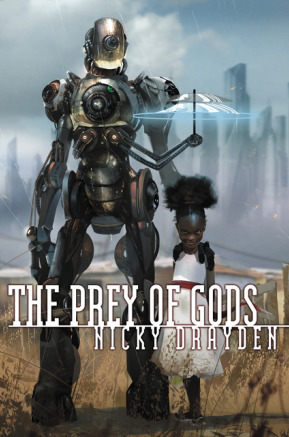

The Outside by Ada Hoffman*
AKA the book the put me in an existenial crisis. Souls are real, and they are used to feed AI gods in this lovecraftian inspired scifi where reality is warped and artifical gods stand against real, unfathomable ones. Autistic scientist Yasira is accused of heresy and, to save her eternal soul, is recruited by post-human cybernetic 'angels’ to help hunt down her own former mentor, who is threatening to tear reality itself apart.
The Prey of Gods by Nicky Drayden
South African-set scifi featuring gods ancient and new, robots finding sentience, dik-diks, and a gay teen with mind control abilities. An ancient goddess seeks to return to her true power no matter how many humans she has to sacrifice to get there. A little bit all over the place but very creative and fresh.
17776: What Football Will Look Like in the Future by Jon Bois*
A multi-media web novel available to read freely online (which you should do!!). I don't want to give too much away as the initial punch of finding things out is part of the journey, but it's both hilarious and profound as it questions the meaning of humanity and life.
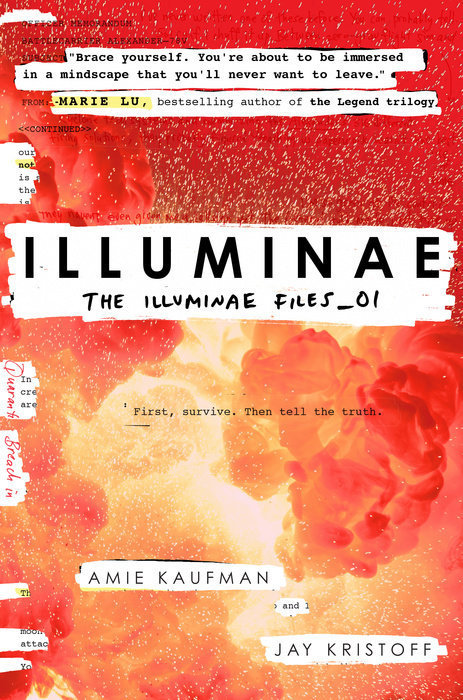


Illuminae (Illuminae Files) by Amie Kaufman & Jay Kristoff*
Young adult told through the medium of transcripts, text messages and the like (this is one of few books where I highly recommend reading a physical copy over a digital as the visual aspect is much more enjoyable like that). After their colony is attacked, the surviving inhabitants flee on space ships, attempting to avoid the pursuing killers while also dealing with a deadly madening plague on board and a ruthless ship AI seemingly losing its mind.
A Closed and Common Orbit (Wayfarers series) by Becky Chambers*
Technically part two of a series, but stands well on its own as the installments are only losely connected (though I recommend reading the first book as well, it's very good). A former ship's AI recently moved into an illegal android body tries to make sense of life as she navigates her way through humans and aliens alike.
The Quiet at the End of the World by Lauren James*
Young adult. After the spread of a global virus causing infertility, teenagers Lowrie and Shen are now the youngest humans alive as the adults around them race to find a cure. As they investigate the ruins of the world, the two come across records from the past, of how grief stricken people turned to raising artificial children in apps and how these 'children' developed, and through these records the two learn of their history. Also has a bisexual main character!


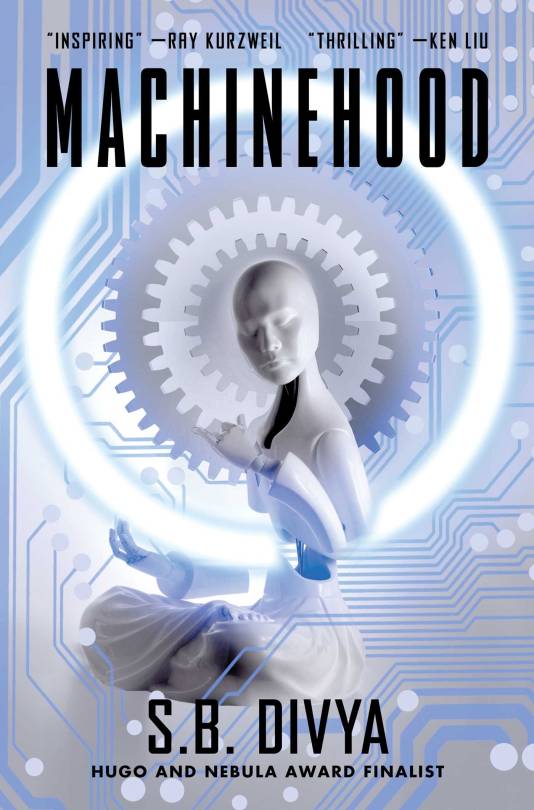
A Psalm for the Wild-Built (Monk and Robot series) by Becky Chambers
Novella. Long ago, robots, upon gaining sentience, simply laid down their work and walked into the wilderness. Long after, a tea monk looking for purpose follows after them into the wilds, where they come across one of the robots seeking its own sort of answers. While not plotless, this story focuses more on character and vibes over plot. Also has a nonbinary main character and features conversations on gender between human and robot.
All Systems Red (The Murderbot Diaries) by Martha Wells*
After having hacked its own governor module, SecUnit uses its small amount of new freedom to secretly download and watch as much media as it can between doing its job guarding humans. But when the scientists it’s been charged with keeping safe come under attack, it must make a choice about whether to continue keeping its freedom secret or risk it all to save them. The series features both novellas and full length novels, and balances humor with scathing critique of capitalism.
Machinehood by S.B. Divya
Prudent in the rise of AI and machine learning, Machinehood shows a near future in which humans struggle to find a place on the workforce as more and more jobs are given to AI. Status quo is shaken as a dangerous terrorist group calling itself The Machinehood starts committing attacks. A close look both at the rights of humans in a technologically changing world, and at the rights of AI as their intelligence edges ever closer to full sentience.

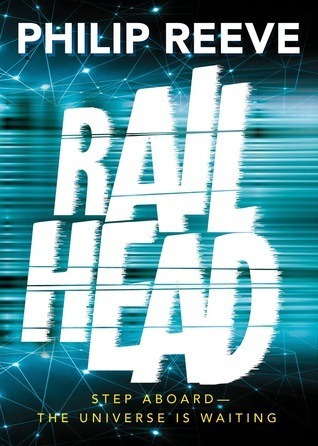
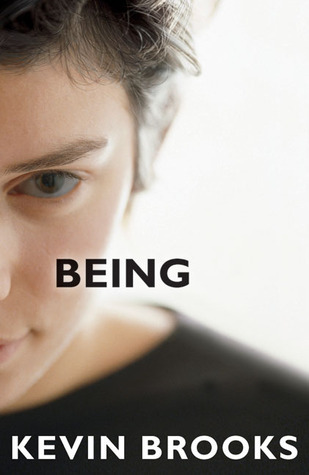
The Company of Death by Elisa Hansen*
A wild mix of genres, where a zombie apocalypse has struck and vampires gather up humans to keep their food source from going extinct, a robot travels across America with a young man she's tasked to keep safe, and former-vampire-hunter-recent-zombie Emily teams up with Death himself to stop the apocalypse. Features bi and ace characters! Bonus rec: the author also runs the youtube channel Maven of the Eventide, where she talks about various vampire media. Check it out!
Railhead by Philip Reeve
Young adult. In a future where humanity travel between the stars using not spaceships but a portal-connected system of sentient trains, a young thief and street urchin is hired to steal something off of the Emperor's train.
Being by Kevin Brooks*
Young adult. Cards on the table, I think I was about 14 when I last read this, but it made a strong enough impression that I still think of it as one of my favorite books. After having gone in for a routine exam, doctors make a stunning discovery about Robert Smith: he isn't human. Suddenly hunted, Robert goes on the run as he tries to cope with the fact of his own existence. While I love this book, it gives very few answers to its many mysteries, so don’t go in expecting full explanations.
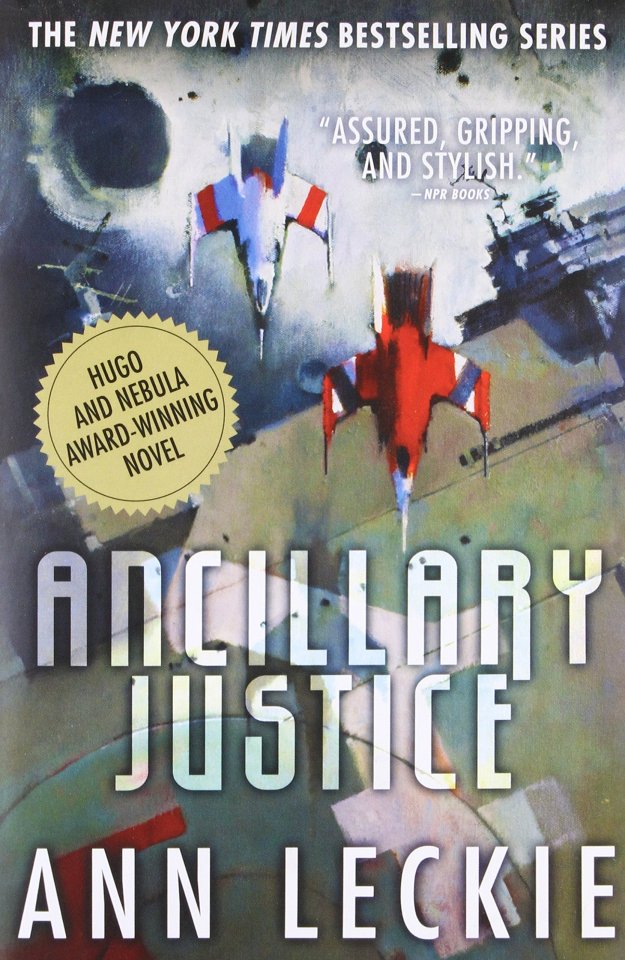
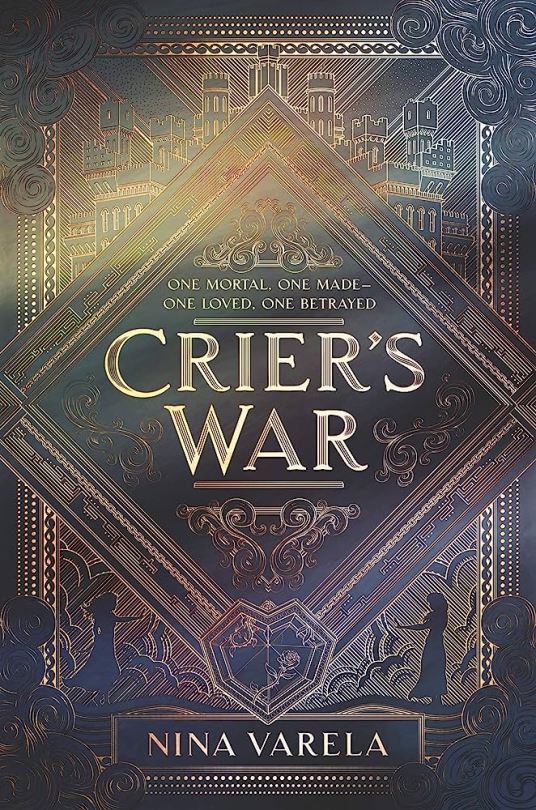

Ancillary Justice by Ann Leckie*
A space opera in which sentient spaceships can walk the ground in stolen human bodies, so called ancillaries. One of these ancillaries, the sole survivor after the complete destruction of her ship and crew, is one the hunt for revenge. This series also does very cool things with gender!
Crier's War by Nina Varela
Who says sci-fi has monopoly on robots? In sapphic YA fantasy Crier's War, artificially created automae have defeated and subjugated humans, who live as second class citizens. Young Ayla goes undercover as a servant, meaning to assassinate automae girl and Sovereign's daughter Crier. This would be easier if the two weren't quick to develop feelings for each other.
My Heart is Human by Reese Hogan
Nine years ago, all complex technology was made illegal. This complicates life for Joel, young transgender single father, as a bionic just uploaded itself into his brain without consent. Scared of losing his daughter, Joel tries to keep the bionic secret while using it to fix his life, but things quickly get more complicated as the bionic gains more and more control of his body. Makes a lot of cool paralells of bodily autonomy to Joel's experiences as a transman. Bonus rec: if you like the general concept of struggling for physical control over one's body with an AI, may I also suggest the (much grittier and gory) movie Upgrade.


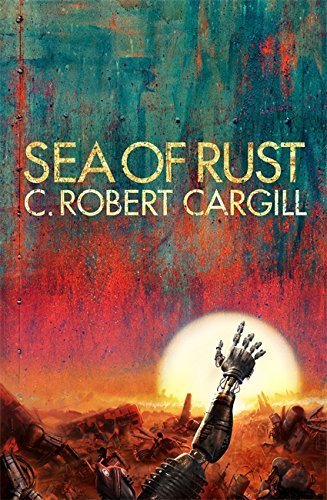
The Archive Undying (The Downworld Sequence) by Emma Mieko Candon
In a world where AI gods sometimes lose their minds and take entire populations down with them, Sunai was the only survivor when his god went down. In the 17 years since, he has wandered on his own, unable to either die or age, drowning his sorrows in drink and men. But his attempts to flee his past comes to a stop as he is forced back into the struggle between man and machine. Featuring some pretty wild world building and narrative techniques, this book will definitely confuse you, but it is worth the experience.
Activation Degradation by Marina J. Lostetter
Unit Four comes to life in the middle of a war. The mine it was created to care for is under attack, and as Unit Four is activated with the memories of its predecessors, it is thrown into the task of protecting it at any cost. When the battle leads to its capture, it is prepared to do anything to stop its captors, even as their very presence causes it to question all that it knows.
Sea of Rust by C. Robert Cargill*
Years after the death of the last human at the hands of a robot uprising, Brittle travels the desert searching for machines on the brink of breaking down whose parts she can scavenge. The world is quickly falling apart as a war between OWIs - One World Intelligences - struggle to absorb every robot, willing or not. Bleak and captivating, Sea of Rust features horrible people who you can’t help but root for anyway as they struggle for their lives while questioning the very nature of said lives.
Bonus AKA I haven't read these yet but they seem really cool



Hybrid Child by Mariko Ōhara
Japanese 1990s classic. Follows an escaped AI who can take on the form of the people it has consumed.
World Running Down by Al Hess
Follows a powerful AI that has been forced into an android body against its will.
The Thousand Year Beach by Hirotaka Tobi
Set in a virtual world populated by AIs, meant as a resort for human guests who stopped showing up over a thousand years ago, leaving the AIs on their own.
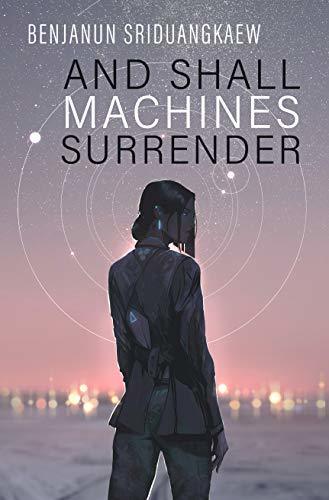

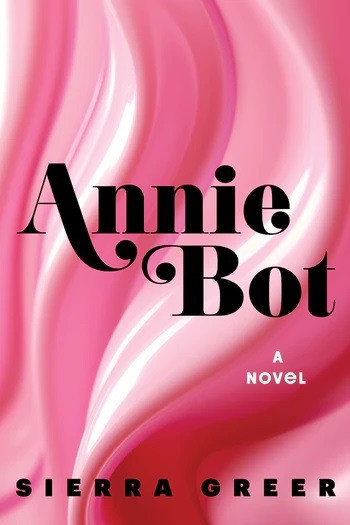
And Shall Machines Surrender by Benjanun Sriduangkaew
Novella. Machines are the gods and rulers of the Dyson sphere Shenzhen, where humans live in luxury and strive to become host bodies for future AIs.
After On by Rob Reid
Phluttr is a social media and a person, potential hero and potential villain, holder of the secrets of all her users.
Annie Bot by Sierra Greer
Annie Bot was designed to be a perfect girlfriend, but as she learns all the more about being human, perfection becomes all the more distant.
Honorary mentions AKA these didn't really work for me but maybe you guys will like them:
The Lives of Puppets by T.J. Klune, Machines Like Me by Ian McEwan, Barbary Station by R.E. Stearns, The A.I. Who Loved Me by Alyssa Cole, Medusa Uploaded by Emily Devenport
#nella talks books#the outside#the prey of gods#17776 football#the illuminae files#wayfarers#the quiet at the end of the world#a psalm for the wild built#the murderbot diaries#machinehood#the company of death#railhead#being#imperial radch#criers war#my heart is human#the archive undying#activation degradation#sea of rust
188 notes
·
View notes
Text
A Weekly Reading Journal 2.23.25
Feeling a tiny bit slumpy after a string of okay but not amazing books. Not helped by my wanting to read a big complex fantasy despite knowing that my attention span isn't up to it. My brain is rude.
Currently Reading:
Fiction:
The Grace of Wild Things by Heather Fawcett
Poetry:
The Collected Poems of Denise Levertov
Nonfiction:
The Poetry of Strangers by Brian Sonia-Wallace
The Letters of Emily Dickinson
What If? by Randall Munroe
Just Finished:
Entangled with You: The Garden of 100 Grasses by Aki Aoi ★★★
Rose by Li-Young Lee ★★★
Dukes Do It Better by Bethany Bennett ★★
Crumbs by Danie Stirling ★★
General Reading Thoughts:
Still feasting on comics but hopefully a novel will grab me soon. I'd like to devour my words not graze on a bit of this and a bit of that.
Happy Reading!!!
Current Reading Tag || General Original Content || 2025 Reading Page
A few rambles and mini reviews under the cut my dears because everything I read this last week needs talking about.
Entangled with You - was really lovely art wise but I wish the whole book was about the first couple of characters. The other very short tales felt undeveloped.
Rose by Li-Young Lee - beautiful artistry but I wasn't looking for a book full of grief poems. This was on me for not reading up on this particular collection. Want to read his other books still!
Dukes Do It Better - delightful read! A fantabulous time! So historically inaccurate/modern feeling for a regency romance that rating it higher would be a crime! Also still want to go back and read book 2 for more junk food flavored nonsense!
Crumbs - I am bamboozled by this comic. Very flat 'cozy' romance with a weirdly dystopian memory wiping background plot that was never explained????? The art was cute but this was way to long for how plotless it was, let alone the shallow worldbuilding.
1 note
·
View note
Note
6, 25, 26, and 45 for the fic ask game!! :D (happy birthday btw!)
Thank you :D Both for sending it & for birthday wishes.
6. When’s the last time you wrote?
On the 27th. Worked on the Abby&Cecil Lyme disease WTNV one. Should write now but I’m probably just gonna play Zelda.
25. What’s your favorite part of the writing process (worldbuilding, brainstorming/outlining, writing, editing, etc)?
Worldbuilding if I did more of it, but tbh most of the worldbuilding I do is for Zelda and WTNV and I haven’t written enough for those fandoms. I do enjoy the brainstorming process, but not outlining. I just pace around and Think lol. So, all in all, it’s gotta be writing.
26. What’s your least favorite part of the writing process?
Also writing /hj
No, I think my least favourite part is when I have an idea but can’t write it down, or have no ideas, or just finding the motivation to write. Also the accountability that comes from posting multichapters, like I’m sorry but I don’t think I’m gonna update the fic you like, I’m busy and also just a Little Guy.
45. What genre/trope do you tend to write the most?
My first answer is angst, particularly angst where it’s like “I’m looking deep inside myself in this plotless character study” (this happens a lot), but also…
Ok, so I’ve written 6 fics about (and 1 meta vaguely pertaining to) MAG 199, because I listen to it and it’s like something within me is just Writing Jangst Now. What I don’t write is fluff, bc it’s just more interesting to me to write angst or at the very least hurt/comfort. I just. Enjoy pain. It’s about the catharsis, mate.
The ask game.
1 note
·
View note
Text
The Nine Intolerable Crimes
The Varonar Period, which in its most expansive definition runs from about 50-49.5 TYA, was the last era in which we can speak of an approximately global civilization on Sogant Raha, at least until the rise of the Issaranian mercantile empires millennia later. Although many histories frame it as the last gasp of the post-Settlement civilization, the Varonar period was also a renaissance. Though marked by major ideological conflict and war, especially in southern Vinsamaren, trade routes linked all major regions of human settlement (all in Vinsamaren and Altuum at that time), smaller states were rapidly federating into larger polities, and, at least until the Burning Spring, the global population boomed.
Two major impulses dominated international politics in this era. The first was the continuation of the Settlement legacy. Although the form of the institution had radically changed, the spiritual descendants of the Archive still did their best to maintain intellectual and historical continuity with the inheritance of the Exile, and were influential in both political and academic circles. This strain of thought positioned Varonar-period states as inheritors of a rational, humane, and pluralist tradition. The foundational texts of this tradition were the Settlement Agreements that brokered peace between the Instrumentalists and Renewalists, the collectd works of the Kirkana College theorists, and--though by then at a very great remove--even the prophetic texts of the Janese, which included fragments from earlier in the Exile that are possibly more than 75,000 years old. That age is important, because even though knowledge of the Exile and the earlier phase of human civilization was scarce in the Varonar period, the authority of the Settlement legacy came in part from its antiquity, and in part from the technological marvels of the Settlement period ancestors that now seemed to be out of reach. Under this legacy, the collective human presence on Sogant Raha bore with it certain collective responsibilities, ecological, social, and moral.
The second major impulse that dominated this period I will call for the sake of convenience the "sovereignty movement." While hierarchical political organizations with statelike characteristics were not at all new on Sogant Raha, under the Settlement legacy they were framed as self-determining communities that were themselves part of a larger human community, whose autonomy was limited both by responsibility to members and by responsibility to the rest of human civilization. Parodas Tsi has argued convincingly--and I agree--that this viewpoint was essentially an extension of the Exile. In the hostile planetary environments of the Exile (to say nothing of life in deep space!), where interdependence was high, absolute self-sovereignty of either the individual or of any community within the interdependent whole, was impossible. Certainly some societies that enshrined these values during the Exile did exist; equally certaintly, none of them survived long, and they either transitioned to a different mode of existence, or perished. At the same time, though, conformity could not be enforced through overly authoritarian means. Killing dissenters would waste valuable manpower in an environment where every life was precious; simple exile, of course, was impossible. Thus, these societies developed elaborate conflict-resolution and deescalation techniques, many of which survived as part of the package of social technology which the people of the Ammas Echor brought with them to Sogant Raha, and which were maintained as valuable tools for centuries after.
But Sogant Raha was not like other planetary environments. Though alien and presenting its own unique dangers, it was possible in principle for independent human communities to exist. Humans did initially disseminate themselves widely over the planet, especially after the collapse of the initial colony and the destruction of the Ammas Echor. But as a mode of interaction, a degree of communitarian spirit continued to frame inter-community relations.
The sovereignty movement was the culmination of various philosophies of government that had sought for generations to elucidate an ethic of political independence, and which criticized or outright rejected the communitarian framework of the Settlement legacy. In the Varonar period, using philosophical justifications as diverse as democratic self-determination, utilitarian greater good, and divine right of princes, some states began to assert their fundamental sovereignty, under which view political power was monocentric, exclusive, ought to be free from outside interference or abrogation, and could be enforced by arms.
The opposition between these two perspectives dominated the course of the period, and was one of the fundamental axes along which the Continent-Archipelago conflict was formed. This opposition also created innovations in international law, by which I mean both the law governing relations between states, and the common understanding of law as shared between jurists in those states.
One very influential product of this period was an attempt by some sovereigntists to express certain Settlement-legacy ideas in a sovereigntist framework, both to provide a compromise position, and to assure their opponents that sovereigntism was not merely a plea for interstate anarchy. The Opali legal framework, which was very influential in the Varonar period, elucidated in particular "intolerable crimes," crimes which no state could permit and retain its legitimacy. By virtue of failing to prosecute these crimes, a state ceased to be a state, and thus its sovereignty ceased to function; and it became incumbent on other states to intervene for the common defense of human life and values.
The Opali laws do not survive in their complete form, but they became foundational to the customary law of many southern Vinsamaren societies after the Burning Spring and the Varonar Collapse. Many different interpretations of the concept of "intolerable crime" thus exist; one especially influential version was that framed by the Ghimali jurists, which was adopted throughout the Edayken coast region.
In translations of the Ghimali codes, the nine intolerable crimes are usually translated as murder, imprisonment, rape, arson, dikebreaking, well-poisoning, abjection, ostracism, and humiliation. None of these (except perhaps dikebreaking and arson) map neatly onto how we might frame these concepts, so some elucidation is required.
"Murder" in Ghimali is any act of taking human life. A terminological distinction between killing and murder was not observed by the Ghimali, which is not to say that in all cases was killing unlawful. Self-defense or defense of the community, especially against one of the other intolerable crimes, was legal. But the Ghimali were somewhat pacifistic in their outlook, prizing a principle of nonviolence wherever possible, and thus did not countenance official killing by the state: "lawlessness cannot answer for lawlessness" was a common Ghimali saying. "Imprisonment" covers all deprivations of physical freedom, including kidnapping, slavery, serfdom, or forced labor. Likewise, the word usually translated as "rape" in Ghimali was not particularly sexual in connotation and includes all violations of the physical body: torture, forced brands or tattoos, violation of the body with weapons, nonlethal poisoning, and so forth. These first three crimes together were the "crimes against persons," and important constituitive elements of other kinds of crime, even crimes which other legal philosophies framed as crimes against states or communities, like war and genocide.
Arson, dikebreaking, and well-poisoning were the so-called "crimes against property," and were different from the crimes against person in that intent was much less important. This is because these crimes derived their status from the fact that they endangered the community as a whole to some degree. Fire spreads from building to building, flooding covers all the low ground, and the contamination of a water source threatens all who rely on it. Since the perpetrator of these crimes could not realistically limit the damage they caused, and even if they caused no immediate deaths they were likely to cause suffering or death in the future, by virtue of depriving individuals of shelter, or by causing shortages of crucial goods like food and water. Thus, while what other societies consider "property crime" was mostly a civil matter, in Ghimali law, it was criminal, but it was restricted to crimes which contained one of these three crimes (or acts very similar to them) as fundamental constituitive elements. Although the Ghimali had a much smaller industrial base than their ancestors did, they did have some industry, and both pollution and monopolization of natural resources were prosecuted under these laws.
The last three of the intolerable crimes in Ghimali law were called "crimes against morals." We must be very careful when translating that phrase! They were not the equivalent of obscenity laws--the Ghimali had no such laws--nor were these crimes held to be crimes simply because they offended decent sensibilities or lowered the character of public discourse. A fundamental element of intolerability, as a class of criminal act, was and has always been an actual endagering of human life. The Ghimali word for "morals" is used in two distinct senses: one, akin to ethics or fundamental moral philosphy, and two, day-to-day conduct. In the sense used here, "crimes against morals" might be translated more aptly (but more verbosely) as "criminal matters which concern conduct [that might appear not to immediately endanger human life]."
In this context, "abjection" (also translated "contempt" or "slander") is not merely to insult someone or lie about them. It is to speak of someone in a way that cuts them off from the common body of humanity or deprives them of fundamental dignity, and to do so 1) to a third party, 2) publicly, 3) forcefully. Insulting someone privately, or to their face, was never a crime in Ghimal. To say in public that someone ought to be beaten to death, however, was. Abjection was the verbal or written counterpart to "ostracism," which was not merely to refuse social association (again, private interpersonal matters were never considered a matter for Ghimali law), but any attempt to actually physically deprive someone of the material necessities of life, or access to the common public support. The easiest cross-cultural example would be actual exile; but as this is often a legal sanction rather than a forbidden, the analogy is inexact. Another example might be someone so reviled by their neighbors that all in the vicinity refuse to do business with them, to sell them the common necessities of life or to give them aid in times of hardship. But it must be emphasized that Ghimali law strongly preferred that crimes contain an active element. Simply passing by someone in need, however cruel, was rarely criminal. And while it might seem that, in a society like Ghimal, one would have to live in a small, poor, and isolated place indeed to make ostracism a serious crime, it was occasionally punished even in major towns. In practice, it seemed to function as anti-discrimination legislation, in commercial transactions, in the provision of amenities, and in employment, especially in contexts where the transactional association in question was in principle available to all.
The last of the interolable crimes was "humiliation." While abjection contains a third-party component (insulting someone to their face is not abjection), and ostracism contains a public component (refusing personal association is not ostracism), "humiliation" could in principle occur entirely in private. "Humiliation" was not merely deliberately embarassing someone, of course; nor was it generally verbal, except in extreme cases. Where abjection and ostracism involved portraying to others that someone was outside the common body of humanity, humiliation concerned trying to cause someone in themselves to understand themselves to be outside that body. It grouped together forms of torture that did not involve violating the body--sleep deprivation, for instance--acts of public humiliation, certain kinds of abuse of power, and domestic abuse. Physical abuse could be important evidence for prosecuting humiliation, but was not at all a necessary component of the crime. Harassment and intimidation were prosecuted under statutes against humiliation as well.
The crimes against morals were considered fundamental not only to certain kinds of social violence, like domestic abuse, but also to mass violence like pogroms and genocide. As dehumanization was understood to be an important precursor to violence in Ghimali culture, the existence and prosecution of these crimes was an attempt to fortify Ghimali society against these disasters. The closest analogue in many Varonar societies to the north might be laws concerning public discrimination, blasphemy, slander/defamation, and hate speech, but it is important to understand the difference between these categories of law and Ghimali crimes against morals.
First, slander and defamation, where criminal, were matters of individual reputation. Ghimali society was fairly egalitarian and individualistic, and thus did not have an elaborate concept of public status and honor; whereas the Estalese and Hastani laws on slander were an outgrowth of a hierarchical honor culture that eventually came to include dueling. In all known law codes which prosecute slander as a criminal matter from the Varonar period (none are extant for the following eras), an ironclad defense to the charge was that the victim had no public reputation to speak of, or was too low status to matter. Second, Ghimal had no established religion, and neighboring societies with blasphemy laws usually framed their blasphemy laws either as a defense of the truly sacred (only one privileged established religion which the law protected), or as a way to prevent violence in a pluralist socity. Ghimal, while fairly pluralist, considered freedom of expression a virtual absolute; occasional pushes by moralizers to criminalize blasphemy and obscenity usually broke on this shared principle. Third, antidiscrimination law (at least in the Varonar period) was usually legally constructed as principled exceptions to actions that would otherwise be legal (public association, public speech) necessary to maintain order; the crime was one against the dignity of the fellow citizen, or a nebulously conceived harm to public morals. In Ghimal, such legislation would have been shot down as far too wishy-washy. Ethnic, religious, or cultural discrimination, as regulated under the crimes against morals, were regulated for the obvious reason that they were a prerequisite to the shedding of blood, and that if not counteracted long before blood was actually shed, the momentum of mass violence would be too great to stop.
Parodas Tsi links the Ghimali crimes against morals to the tradition of dispute resolution from the Settlement legacy, and this is correct as far as it goes. The specifics of Ghimali statues and the various legal sanctions which were pronounced on offenders makes it clear that Ghimali jurists and judges clearly had elements of this legacy in mind when crafting these laws. But there were also practical reasons for the statues to be constructed as they were, and for the crimes against morals to be seen as a backstop against bloodshed. Ghimal, along with neighbors like Jaracoa and Sagna, experienced protracted economic contracton and was riven by major ethnic tensions in the aftermath of the Varonar Collapse, with refuges and long-term trends in migration causing conflict in the eastern border areas, and landowners in these regions attempting to exploit social upheaval to strengthen their political power. An attempted coup by a reactionary faction led to at least one major civil conflict in Jaracoa, with spillover into Ghimal. These laws had a solid theoretical underpinning in Ghimali culture, but they were developed in a practical environment, where a new balance had to be found as demographics shifted in the pluralistic Ghimali state.
The three principles foundational to Ghimali legal theory were the freedom of the individual, public safety, and equality before the law. Very many legal theorists and legislators linked these three principles to the three categories of intolerable crime: crimes against the person violated the principle of individual freedom, crimes against property endangered the community, and crimes against morals violated fundamental egalitarian principles. Together with the theoretical basis, the Ghimali law codes proved influential. After 49,250 TYA or so, variations on the Nine Intolerable Crimes are found throughout southern Vinsamaren, and occasionally beyond; eventually, a changing climate and several plagues led much of Southern Vinsamaren to become depopulated, but there is speculation, backed up by tenuous but intriguing evidence, that the Ghimali legal outlook influenced cultures furthern north for many thousands of years. Sura Rakaras argues that the long-term absence of slavery from eastern and southwestern Vinsamaren is a legacy of Ghimali law, and that this zone might have even extended as far north as the Plains region, before subsequent migrations moved the border back south.
--Ibadar Tarassi, Historical Developments in Law, University of Presh.
33 notes
·
View notes